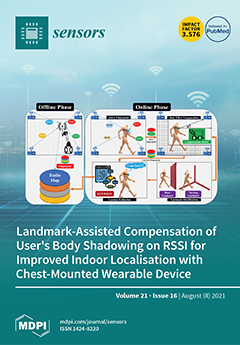Open AccessArticle
Integrating Personal Air Sensor and GPS to Determine Microenvironment-Specific Exposures to Volatile Organic Compounds
by
Michael S. Breen, Vlad Isakov, Steven Prince, Kennedy McGuinness, Peter P. Egeghy, Brent Stephens, Saravanan Arunachalam, Dan Stout, Richard Walker, Lillian Alston, Andrew A. Rooney, Kyla W. Taylor and Timothy J. Buckley
Cited by 4 | Viewed by 4325
Abstract
Personal exposure to volatile organic compounds (VOCs) from indoor sources including consumer products is an understudied public health concern. To develop and evaluate methods for monitoring personal VOC exposures, we performed a pilot study and examined time-resolved sensor-based measurements of geocoded total VOC
[...] Read more.
Personal exposure to volatile organic compounds (VOCs) from indoor sources including consumer products is an understudied public health concern. To develop and evaluate methods for monitoring personal VOC exposures, we performed a pilot study and examined time-resolved sensor-based measurements of geocoded total VOC (TVOC) exposures across individuals and microenvironments (MEs). We integrated continuous (1 min) data from a personal TVOC sensor and a global positioning system (GPS) logger, with a GPS-based ME classification model, to determine TVOC exposures in four MEs, including indoors at home (Home-In), indoors at other buildings (Other-In), inside vehicles (In-Vehicle), and outdoors (Out), across 45 participant-days for five participants. To help identify places with large emission sources, we identified high-exposure events (HEEs; TVOC > 500 ppb) using geocoded TVOC time-course data overlaid on Google Earth maps. Across the 45 participant-days, the MEs ranked from highest to lowest median TVOC were: Home-In (165 ppb), Other-In (86 ppb), In-Vehicle (52 ppb), and Out (46 ppb). For the two participants living in single-family houses with attached garages, the median exposures for Home-In were substantially higher (209, 416 ppb) than the three participant homes without attached garages: one living in a single-family house (129 ppb), and two living in apartments (38, 60 ppb). The daily average Home-In exposures exceeded the estimated Leadership in Energy and Environmental Design (LEED) building guideline of 108 ppb for 60% of the participant-days. We identified 94 HEEs across all participant-days, and 67% of the corresponding peak levels exceeded 1000 ppb. The MEs ranked from the highest to the lowest number of HEEs were: Home-In (60), Other-In (13), In-Vehicle (12), and Out (9). For Other-In and Out, most HEEs occurred indoors at fast food restaurants and retail stores, and outdoors in parking lots, respectively. For Home-In HEEs, the median TVOC emission and removal rates were 5.4 g h
−1 and 1.1 h
−1, respectively. Our study demonstrates the ability to determine individual sensor-based time-resolved TVOC exposures in different MEs, in support of identifying potential sources and exposure factors that can inform exposure mitigation strategies.
Full article
►▼
Show Figures






